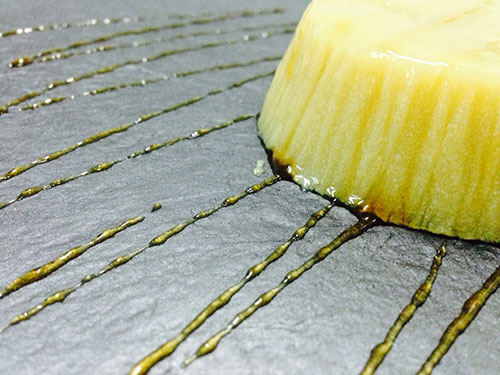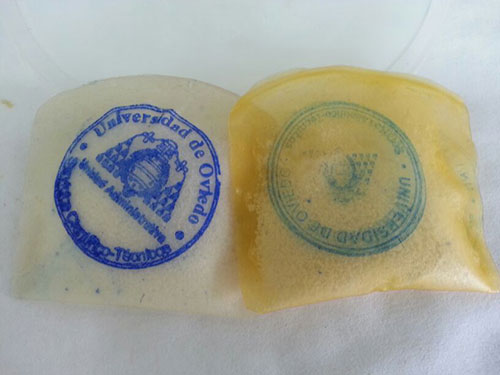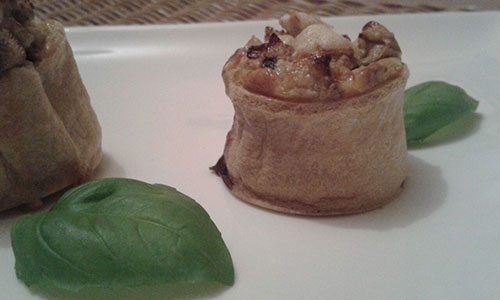



Yolk Fractionation Revolutionises the Application of Egg Products
The Bioprocesses and Reactor Technology (TBR) research group at the University of Oviedo (Spain), recent winners of the 2015 Research Award from the Spanish Egg Research Institute for their work on egg yolk fractionation, spoke in detail with Nuria Martínez Herráez, Editor, ThePoultrySite, about this new research, which could open new avenues in the egg processing industry. For the past 25 years the TBR research group has worked in the Department of Chemical Engineering and Environmental Technology of the University of Oviedo, using various techniques to develop process technologies related to chemical and biological-based products and industrial wastewater treatment.
For the past 25 years the TBR research group has worked in the Department of Chemical Engineering and Environmental Technology of the University of Oviedo, using various techniques to develop process technologies related to chemical and biological-based products and industrial wastewater treatment.
Led by Dr Mario Díaz, the group received the 2015 Research Award from the Spanish Egg Research Institute (HSI) for their work, "New products derived from the yolk and its fractions for the packaging, cosmetics, and food sectors."
The researchers succeeded in separating the yolk into two fractions (granules and plasma) with distinct technological and nutritional characteristics, from which they developed foods low in fat and cholesterol, including mayonnaise or pastries (cupcakes and tocinillos de cielo, a Spanish sweet custard dessert made with egg yolk and sugar), as well as products for other industries including moisturisers and biofilms for packaging and preservation.
Click on photo to embiggen
Dr Amanda Laca and Dr Benjamín Paredes, members of the TBR group, answered some questions about the research and its potential practical applications.
The Poultry Site: Where did the idea of trying to divide the egg yolk come from? What were you looking for initially, before obtaining the different yolk fractions?
TBR group: The idea arose during the thesis project of Amanda Laca. Our main objective was to search for strategies to revaluate potential applications of the egg yolk. In this context, we sought to develop methods that could be used not only in the laboratory, but could also be easily scaled up to an industrial level. In fact, once we realised the many possible applications of yolk fractions, we filed a patent application for our fractionation method.
The Poultry Site: What does the process of splitting of the egg yolk involve?
TBR group: The key step is highly controlled centrifugation of the yolk, which results in the separation of the basic fractions: the plasma (supernatant) and the granules (pellet).
The Poultry Site: The first fractions obtained, the granules and plasma, have distinct properties. Can you speak a little about these properties and tell us why the plasma portion, but not the granules, is fractionated further (to obtain the lipid, aqueous, and protein and lecithin fractions). Do the fractions derived from the plasma have properties distinct from those of the plasma itself?
TBR group: The plasma and the granules have distinct nutritional properties, given their differing compositions. The fundamental difference is that most of the yolk’s lipids (including cholesterol) are concentrated in the plasma, while the majority of its proteins are concentrated in the granules. Furthermore, these fractions have distinct functional properties; for example, emulsifying or gelling properties.
The plasma constitutes the largest fraction (accounting for 70% of the yolk, as compared with 30% for the granules), and thus is fractionated further to obtain additional products with characteristics distinct from those of the initial fraction. Our group has also recently carried out further research, using the granules as a substrate to produce, for example, bioactive peptides.
We have also worked with other yolk fractions to develop gelatins and energy gels.

The Poultry Site: Potential applications of these findings in the food industry include the production of foods that traditionally have required dairy products (e.g., yogurt mousse). Could this research open a new line of production of products for people with lactose intolerance? Would it be profitable for companies in the egg product sector to invest in new products?
TBR group: The research behind the yogurt mousse was part of the thesis of Benjamín Paredes and was our group's first egg-related project. It opened up an interesting new line of research. The research involved working with the albumin of the egg white, taking advantage of its foaming properties. Currently we are mainly focusing on the yolk, which appears to offer many more possibilities.
In fact, using the yolk and its fractions, we recently developed gelatins and energy gels, as well as some yolk-derived snacks which are gluten- and lactose-free and low in calories. All these products could be produced on an industrial scale at a competitive price.
The Poultry Site: Among the food products obtained are several that are low in cholesterol (mayonnaise, baked goods such as cupcakes, etc.). How did you manage to reduce the cholesterol content of the egg fractions? At what type of consumer would these products be aimed? Is there a noticeable difference in texture or flavour that could cause consumers to reject these products? Do you think that offering low-cholesterol products produced through this research could have negative implications for the egg industry?
TBR group: The low cholesterol products are made using the granules (the protein-rich, low-fat fraction of the yolk) as a substitute for the egg yolk. This fraction is very versatile and we have found that it can be used in sauces, pastries, and cakes.
The products are suitable for everyone, and there is a tendency in recent years for consumers to prefer products with lower fat content.
The products we have developed have organoleptic properties very similar to those of traditional products, although it should be borne in mind that certain adjustments to the formulation of some of these products may be necessary if the yolk is substituted with granules.
In terms of negative effects for the sector, on the contrary, we believe it is a positive development for the egg products industry to offer consumers both options (products containing the normal yolk and the low-cholesterol alternative), thus expanding their market offerings.

The Poultry Site: Nutraceuticals are just one of the products you plan to produce in the future. Tell me a little more about them, what they consist of, and whether there is already something similar on the market. In what way would nutraceuticals produced from yolk fractions benefit consumer health?
TBR group: Functional foods (or nutraceuticals) are those whose consumption provides health benefits, in addition to nutritional value. These products contain physiologically active compounds and have demonstrated positive effects, maintaining and enhancing health, and preventing the development of certain diseases.
The yolk has proven to be a source of different types of active compounds, and in recent years there have been several studies in this field. The active compounds have diverse properties, including antioxidant, antimicrobial, anti-inflammatory, and antihypertensive properties.
Prior to their introduction into the market, it would be essential to carry out specific tests in vivo in order to fully verify the efficacy of these compounds, and to study their shelf life to ensure that their activity is maintained up to the date of expiration of the food in which they are contained.
The Poultry Site: Your research has identified applications for eggs that go beyond the food sector. Specifically, you have identified applications in the cosmetics (moisturizers) and bioplastics (biofilms for food packaging) sectors, and have even begun to investigate the development of artificial tissues that could be used in burn units. Are there other sectors to which egg-derived products could be introduced as a result of this line of investigation?
TBR group: In recent years the egg yolk has moved beyond the food sector and potential applications have been identified in a variety of different biotechnology sectors. Although these studies are all very recent, it is foreseeable that the yolk will be consolidated as a highly versatile material, and not merely a food product. However, the transition from research to industry is complex.

The Poultry Site: Is there much difficulty involved in translating this process from the research laboratory to the private sector? Are there companies already interested in this research that want to bring to market food or other products based on this research? What would you say to companies in the egg product sector that may read this interview to encourage them to invest in technology like yours?
TBR group: As we mentioned earlier, the yolk fractionation process is easily scalable and would require minimal investment by a company already dedicated to the manufacture of egg products.
Yes, several interested companies have approached us. However, the biggest problem is not producing fractions on an industrial level, but marketing these fractions as new egg products; sectors that typically use egg yolks (e.g., in confectionery, pre-prepared meals, pastries etc.) are unaware of the existence of these fractions and their potential applications.
As emphasised by Mar Fernández (director of the Spanish Egg Research Institute, with which we frequently collaborate), it is key that companies in this sector invest in research and development to ensure renewal and diversification, as has occurred in the dairy sector.









